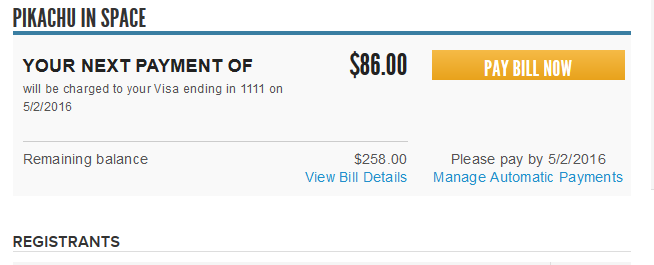
As a teenager, it's never too late to learn about investing. Start by opening an account in an IRA or high-yield savings fund, or an index fund. While you're a teenager, you'll have a lot more time to research different investment options than you do now. Blue-chip stock and Index funds are great investment options. These types of investments offer great returns and low fees.
Diversification
It is possible to invest in different types assets, such bonds, stocks, and cash. This helps reduce overall risk and volatility. You can also enjoy high returns and minimize the risk associated with them. Diversification helps you plan for the future. It will help you learn how to save money and invest for your goals. It is possible to start with stocks and cash and then diversify into international markets and real property.

Index funds
Index funds can make it easier for teenagers to invest. This investment option allows your teenager to invest with minimal knowledge. You can invest in the bonds and stocks of the companies that interest you, and there is no risk. They may even be suited for beginners, as the index funds' low-cost management doesn't require any active management. Many teens find index funds boring, and prefer individual stocks. Blue-chip stocks are preferred by teens because they are more secure than smaller companies.
High-yield savings accounts
A high-yield savings bank account is a great place for teenagers to start a emergency fund, save for a vacation or do some holiday shopping. These accounts are easy to access and offer high interest rates. You should open one for your teenager as soon you turn 18.
Blue-chip stocks
Blue-chip stocks are a great way to impress your teenage self. Besides looking good, they're also reliable. Blue-chip companies are reliable and have proven their value in bad times as well. These stocks are available for purchase because they pay dividends. These payments are made from the company’s revenue. It is possible to get an idea about the value and size of a corporation by looking at its market capitalization.

Real estate
There are many investment options available for your money. Teenagers may only have a few years before retiring. You can begin by investing in the most basic assets like stocks. Stocks are a great investment option for teenagers because the S&P 500 provides an average annual returns of 10%. Stocks are a great way for beginners to start investing with as low as $10. You can open a brokerage account yourself even if a teenager.
FAQ
Which type of investment vehicle should you use?
Two options exist when it is time to invest: stocks and bonds.
Stocks represent ownership in companies. Stocks are more profitable than bonds because they pay interest monthly, rather than annually.
Stocks are a great way to quickly build wealth.
Bonds offer lower yields, but are safer investments.
Keep in mind, there are other types as well.
These include real estate and precious metals, art, collectibles and private companies.
What is the time it takes to become financially independent
It depends upon many factors. Some people are financially independent in a matter of days. Some people take many years to achieve this goal. No matter how long it takes, you can always say "I am financially free" at some point.
The key is to keep working towards that goal every day until you achieve it.
Can I make my investment a loss?
Yes, it is possible to lose everything. There is no guarantee that you will succeed. There are however ways to minimize the chance of losing.
One way is diversifying your portfolio. Diversification helps spread out the risk among different assets.
You can also use stop losses. Stop Losses are a way to get rid of shares before they fall. This reduces the risk of losing your shares.
Margin trading is another option. Margin Trading allows to borrow funds from a bank or broker in order to purchase more stock that you actually own. This increases your chances of making profits.
Is it really worth investing in gold?
Since ancient times, the gold coin has been popular. It has maintained its value throughout history.
Gold prices are subject to fluctuation, just like any other commodity. Profits will be made when the price is higher. When the price falls, you will suffer a loss.
You can't decide whether to invest or not in gold. It's all about timing.
Statistics
- An important note to remember is that a bond may only net you a 3% return on your money over multiple years. (ruleoneinvesting.com)
- If your stock drops 10% below its purchase price, you have the opportunity to sell that stock to someone else and still retain 90% of your risk capital. (investopedia.com)
- They charge a small fee for portfolio management, generally around 0.25% of your account balance. (nerdwallet.com)
- As a general rule of thumb, you want to aim to invest a total of 10% to 15% of your income each year for retirement — your employer match counts toward that goal. (nerdwallet.com)
External Links
How To
How to save money properly so you can retire early
Retirement planning is when your finances are set up to enable you to live comfortably once you have retired. It's the process of planning how much money you want saved for retirement at age 65. Also, you should consider how much money you plan to spend in retirement. This covers things such as hobbies and healthcare costs.
You don’t have to do it all yourself. Numerous financial experts can help determine which savings strategy is best for you. They'll examine your current situation and goals as well as any unique circumstances that could impact your ability to reach your goals.
There are two main types: Roth and traditional retirement plans. Roth plans allow for you to save post-tax money, while traditional retirement plans rely on pre-tax dollars. The choice depends on whether you prefer higher taxes now or lower taxes later.
Traditional Retirement Plans
A traditional IRA lets you contribute pretax income to the plan. You can contribute up to 59 1/2 years if you are younger than 50. If you wish to continue contributing, you will need to start withdrawing funds. After you reach the age of 70 1/2, you cannot contribute to your account.
If you already have started saving, you may be eligible to receive a pension. These pensions are dependent on where you work. Employers may offer matching programs which match employee contributions dollar-for-dollar. Some offer defined benefits plans that guarantee monthly payments.
Roth Retirement Plans
With a Roth IRA, you pay taxes before putting money into the account. You then withdraw earnings tax-free once you reach retirement age. There are restrictions. There are some limitations. You can't withdraw money for medical expenses.
Another type of retirement plan is called a 401(k) plan. These benefits are often offered by employers through payroll deductions. These benefits are often offered to employees through payroll deductions.
401(k), plans
Employers offer 401(k) plans. They allow you to put money into an account managed and maintained by your company. Your employer will automatically pay a percentage from each paycheck.
The money grows over time, and you decide how it gets distributed at retirement. Many people choose to take their entire balance at one time. Others distribute their balances over the course of their lives.
There are other types of savings accounts
Some companies offer different types of savings account. TD Ameritrade has a ShareBuilder Account. With this account you can invest in stocks or ETFs, mutual funds and many other investments. In addition, you will earn interest on all your balances.
At Ally Bank, you can open a MySavings Account. You can deposit cash and checks as well as debit cards, credit cards and bank cards through this account. You can also transfer money from one account to another or add funds from outside.
What To Do Next
Once you have a clear idea of which type is most suitable for you, it's now time to invest! Find a reputable investment company first. Ask your family and friends to share their experiences with them. Check out reviews online to find out more about companies.
Next, figure out how much money to save. Next, calculate your net worth. Your net worth includes assets such your home, investments, or retirement accounts. It also includes liabilities, such as debts owed lenders.
Once you have a rough idea of your net worth, multiply it by 25. That number represents the amount you need to save every month from achieving your goal.
For example, if your total net worth is $100,000 and you want to retire when you're 65, you'll need to save $4,000 annually.